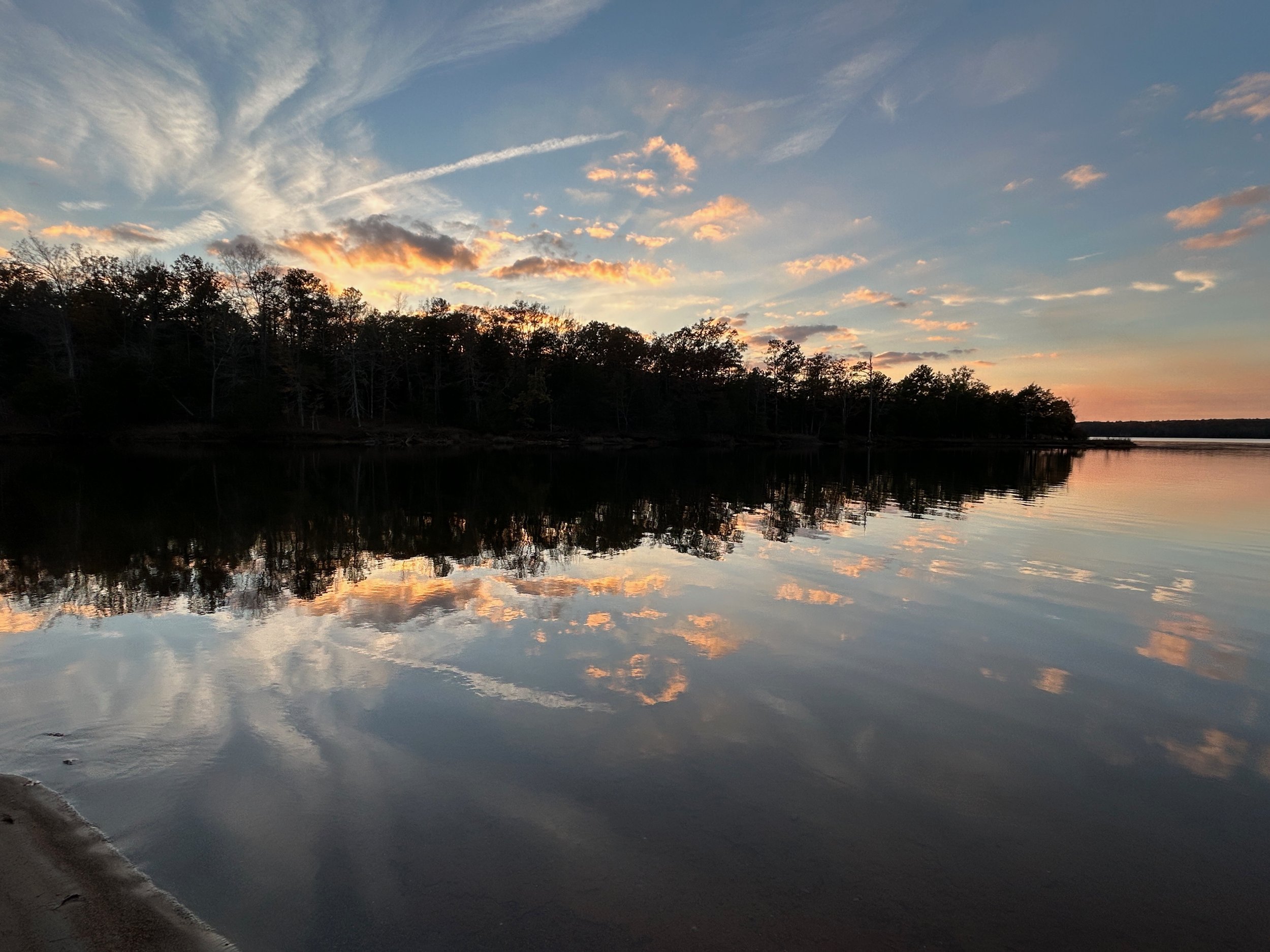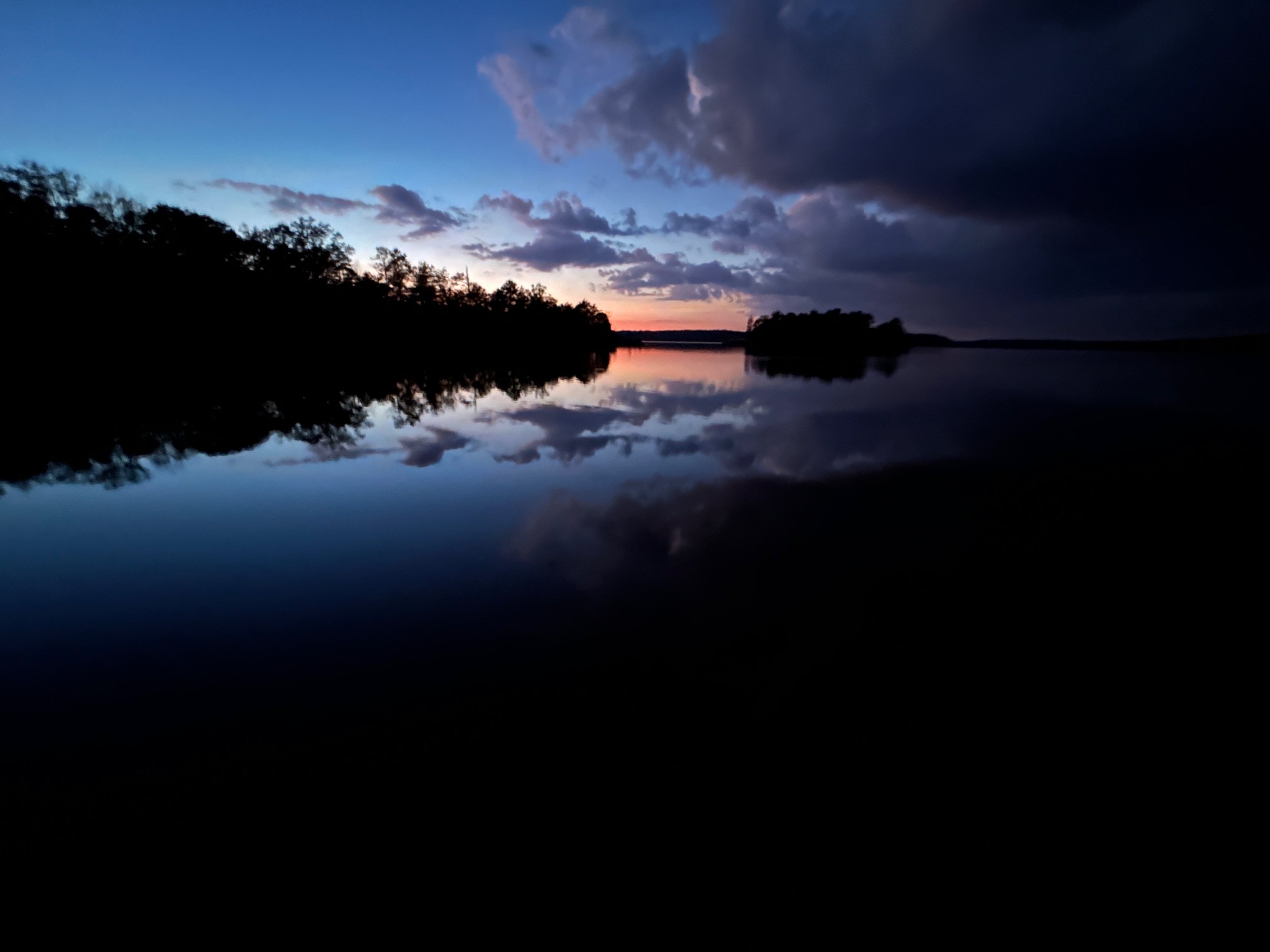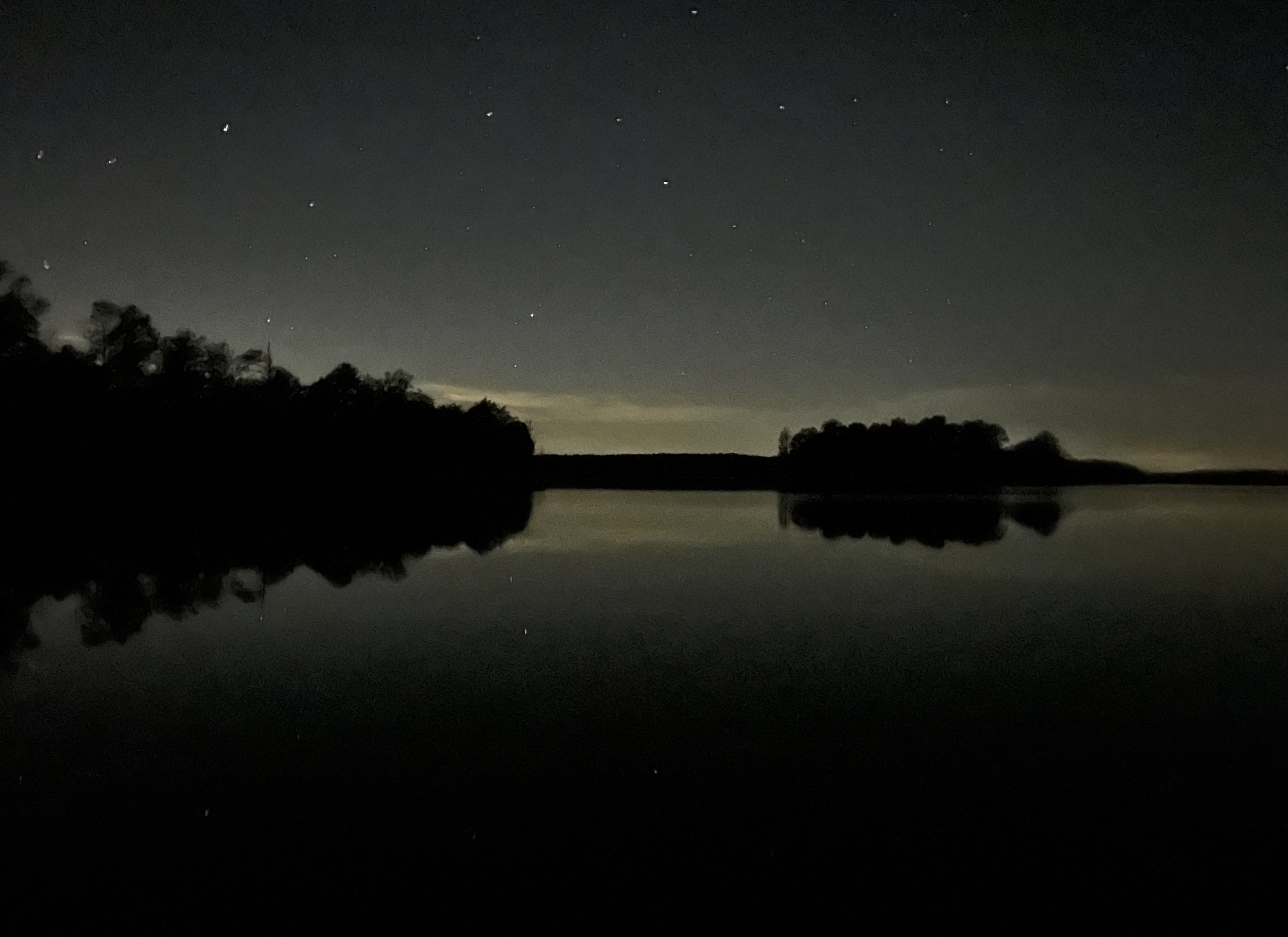Campsgiving
Thanksgiving Camping
Calhoun Falls and Ellicott Rock Wilderness, South Carolina
November 25-29, 2024
We were greeted on arrival at our campsite at Calhoun Falls State Park by a big, shiny eastern rat snake. Rat snakes can come in many colors, from solid black to green or yellow with black or brown stripes and with or without dark blotches. The black version could be confused with a black racer, but rat snakes tend to be glossy and have textured scales, while black racers are more of a matte black with smooth scales. The striped rat snake versions might also be confused with garter snakes. Garter snakes have a red tongue and usually light colored stripes on a dark background, while rat snakes have dark stripes on a light background and a black tongue. They are found in pretty much every terrestrial habitat throughout South Carolina, particularly around abandoned buildings and areas where there is plenty of prey. If you see one, thank him for helping to keep down the rodent population and let him be on his way.



We were treated to some beautiful sunsets from our campsite on the shore of Lake Russell (actually Richard B. Russell Lake). Had we camped in the same spot prior to 1983, we would have had a very different view. The lake was constructed for power production, incidental flood control, recreation, additional stream flow regulation, water supply, and fish and wildlife management. The construction of Lake Russell in 1984, between Lakes Hartwell (built in 1962) and Thurmond (built in 1954) created a 120-mile long reach of near contiguous reservoir habitat along the Savannah River.
We stopped over at Calhoun Falls to spend a day at Diamond Hill Mine. No, this isn’t type of place where parents pay for a ‘salted’ bucket that their kids wash mud from seated at a sluice. This is the place where you bring a shovel, some gloves and a bucket and DIG in about 6 acres of dirt. My knowledge of geology doesn’t extend much past, “ooh pretty rock!” but that didn’t stop me from the pure enjoyment (therapy?) of digging in a big pit of dirt.
Amethyst, Smoky, Skeletal(Elestial), Angle Plated, Iron & Manganese Oxide coated, Aura, and other crystals can apparenly be found in these piles of spoil, as well as minerals including Beryl, Garnet and Epidote.
We didn’t find any giant amethyst or geodes, but did find some small quartz crystals. And some pretty rocks.
The next day we drove up the road to the Ellicott Rock Wilderness area. Ellicott Rock Wilderness was designated by Congress in 1975, and is unique in that it is the only wilderness in the country that spans 3 states and 3 forests: Georgia (Chattahoochee National Forest), South Carolina (Sumter National Forest) and North Carolina (Nantahala National Forest).
Who was Ellicott and why does he have a rock? Major Andrew Ellicott was a surveyor hired by the state of Georgia in 1811 to delineate the 35th latitude parallel. He marked the boundary between North Carolina and Georgia on a rock, today known as Ellicott’s Rock. Apparently the state of Georgia was not particularly happy with the outcome, as the location Ellicott marked was 18 miles south of where the state of Georgia claimed the border was. Two years later, a second commissioning crew was sent out for a re-survey, and determined the 35th parallel to be only 15 feet from Ellicott’s Rock. This rock is known as Commissioners Rock.
“A wilderness, in contrast with those areas where man and his own works dominate the landscape, is … as an area where the earth and its community of life are untrammeled by man, where man himself is a visitor who does not remain; [Wilderness] has outstanding opportunities for solitude or a primitive and unconfined type of recreation.”
This is the wild and scenic Chattooga River. In fact it is so scenic that it is difficult to take a picture of it that doesn’t look like it came out of National Geographic.
The 15.5- mile Chattooga Hiking Trail runs parallel to river, sometimes along high bluffs, sometimes right along the river bank.
At points along the way, the Chattooga trail shares sections with the Foothills and Bartram trails.
Even in November, there are still a few violets to be found blooming.
Now growing only ankle high and referred to as ‘ground’ pine or cedar, these plants grew over 100-feet tall during the Carboniferous Period. They are ancient and not a flowering plant, but reproduce by releasing spores in the form of a dusty powder. The powder has a very high fat content which makes it highly flammable and water repellent. It’s been used to create gunpowder, fireworks, and as flash powder for camera flashes, and also in talcum powders to help absorb moisture and and sweat, and as dusting powder for detecting finger prints.
And in the wet woods there are plenty of opportunities to work on mushroom ID. Using the Mushrooms of the Southeast guide (Todd F. Elliott and Steven Stephenson), my best guess for this delicate one is Little Helmets Coprinellus disseminatus.
Again, I am making my most educated guess- Turkey tail Trametes versicolor? I need to remember to take pictures of the undersides in the future.
We didn’t see any snakes, but did find some rattlesnake plantain Goodyera pubescens, which os actually in the orchid family.
The only herps we found were these Blue Ridge Two-lined Salamanders Eurycea wilderae which we saw both along the trail and on the sandy banks of the river. They are endemic to the southern Appalachian Mountains, found mostly south of Virginia.
Burrells Ford is a US Forest Service campground that is open year round with no charge and no reservations. It is a .25 mile walk in along a gravel road (all downhill in) to the start of the campsites, which are scattered along the Chattooga river. The designated campsites are not right on the river, as that would not be good for wild and scenic health of the river, but are within a very short walk of fantastic views. Most of the sites have a picnic table, fire ring and a metal ‘bear box’ for food storage (no, that is not a bear in our campsite). No running water is available, except what you filter from the river, and there is a vault toilet and trash bins at the main area. I am not sure how many campsites there are, but at least 20. We had the place nearly to ourselves with only one other camper that we saw. But I have read that the place is starting to get a little over-popular, and sometimes rowdy, on summer weekends.
And there is nothing like a campsgiving dinner after a long day of hiking! Camp Turkey Casserole: layer pre-cooked turkey, gravy, dried scalloped potatoes, a can of veg-all, more gravy, and some pre-soaked bread stuffing. Pour over a little extra water with some bullion if the stuffing seems to dry out too much. Cover and bake on the camp stove. Serve with a side of deviled eggs, homemade blueberry-cranberry sauce, and a cranberry pudding cake for desert. Yes, it was really cold out.
























